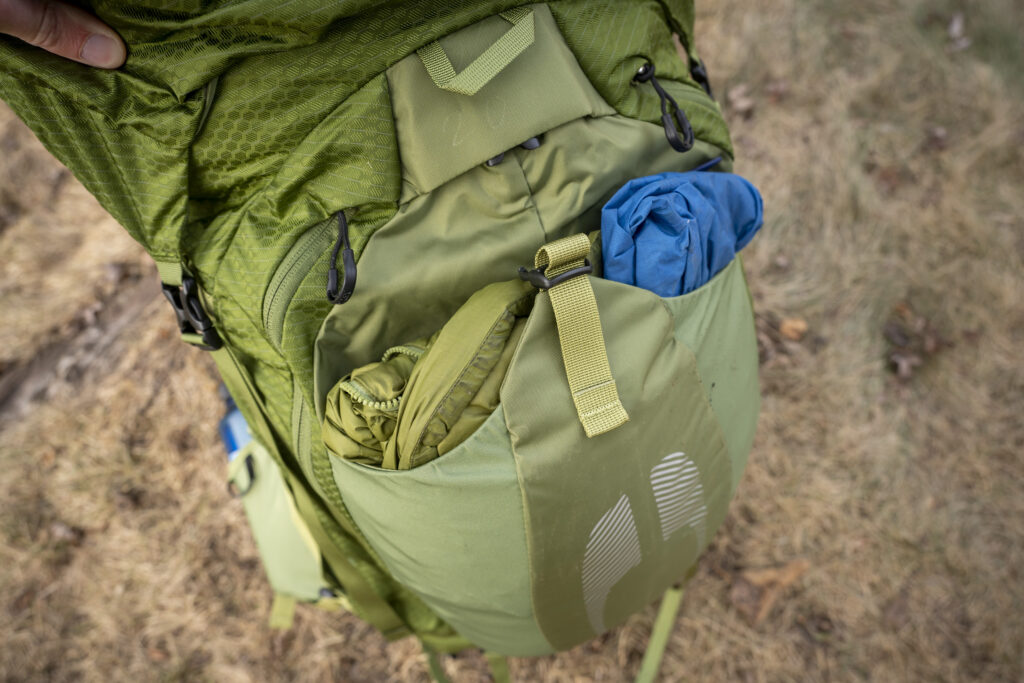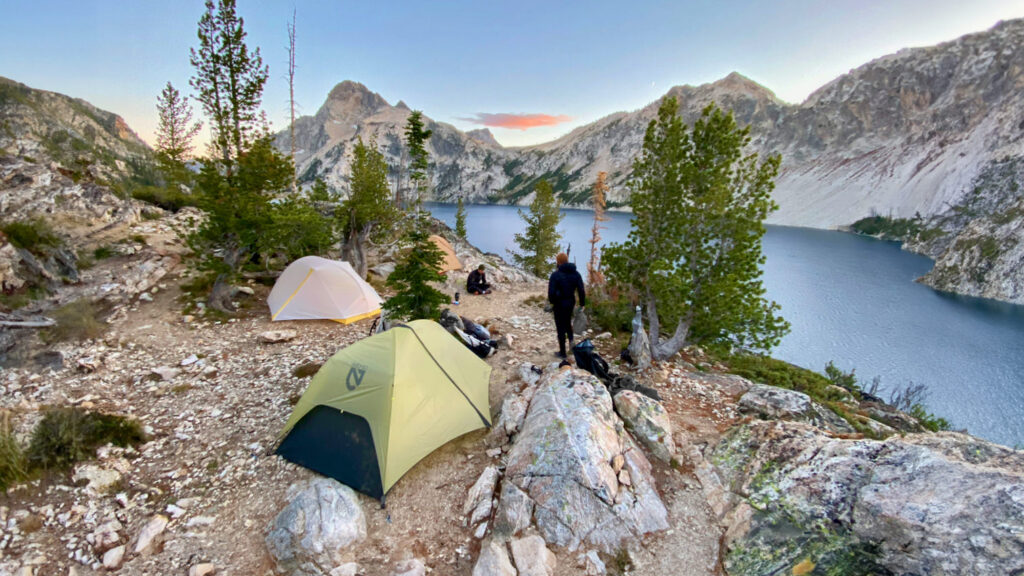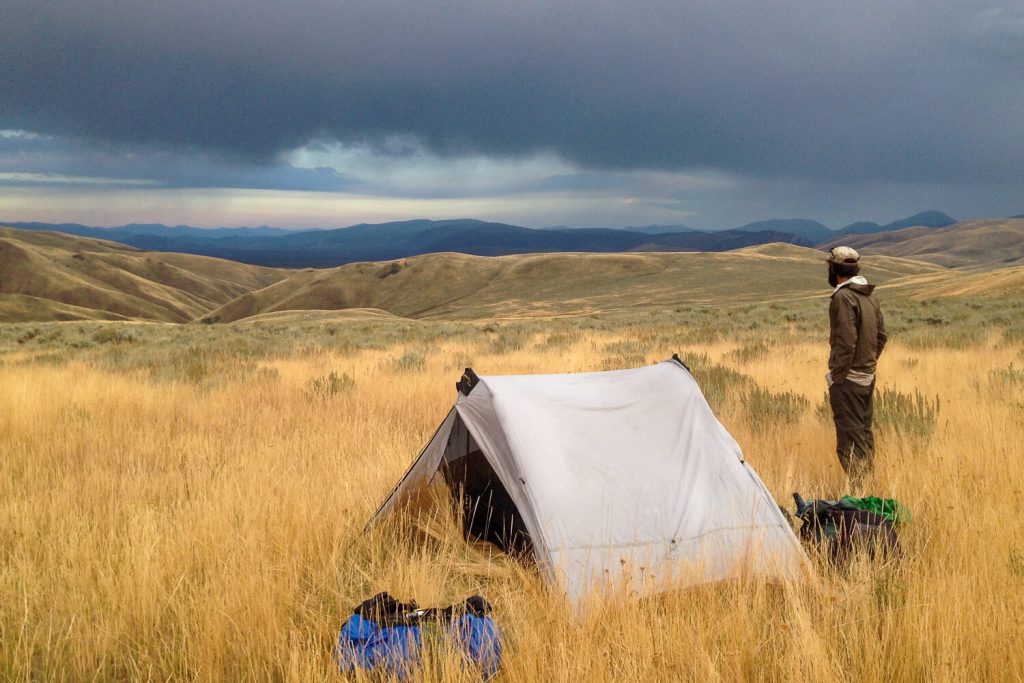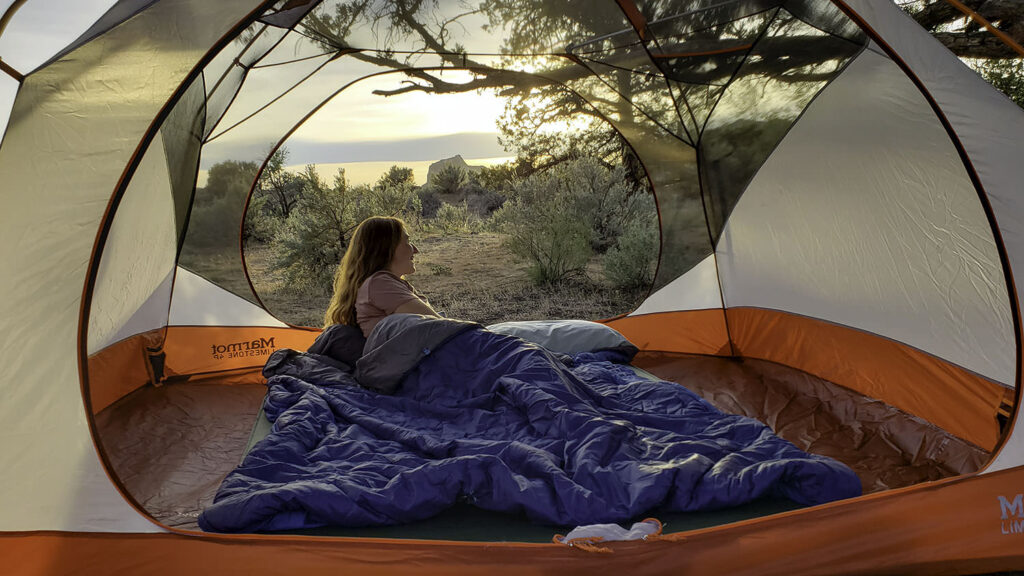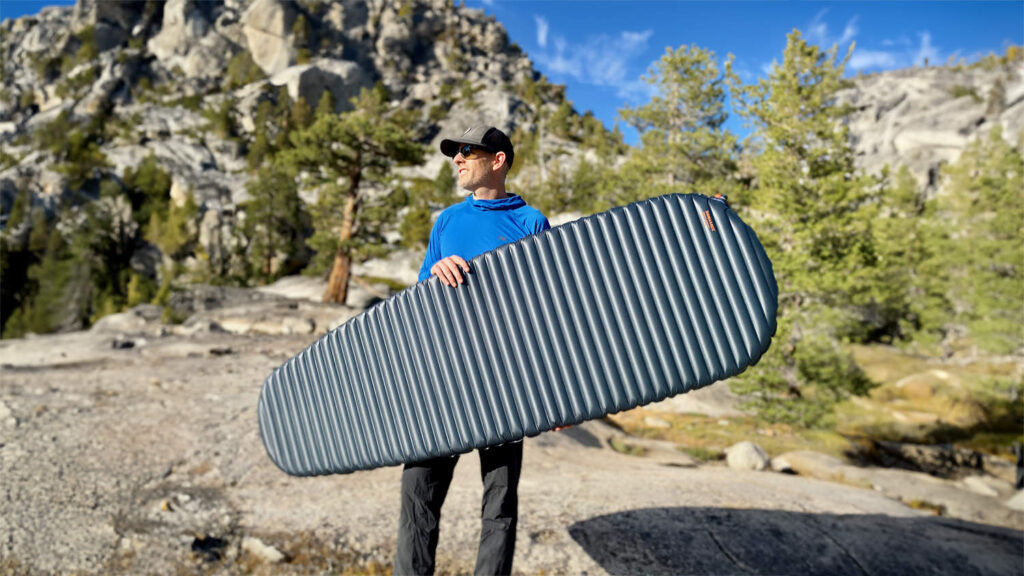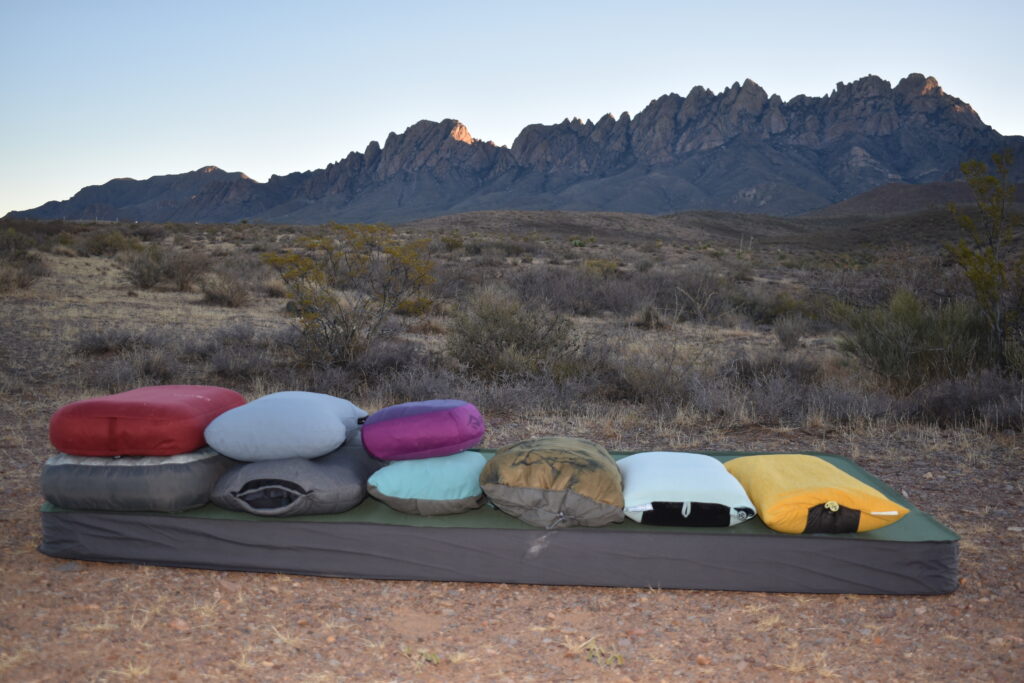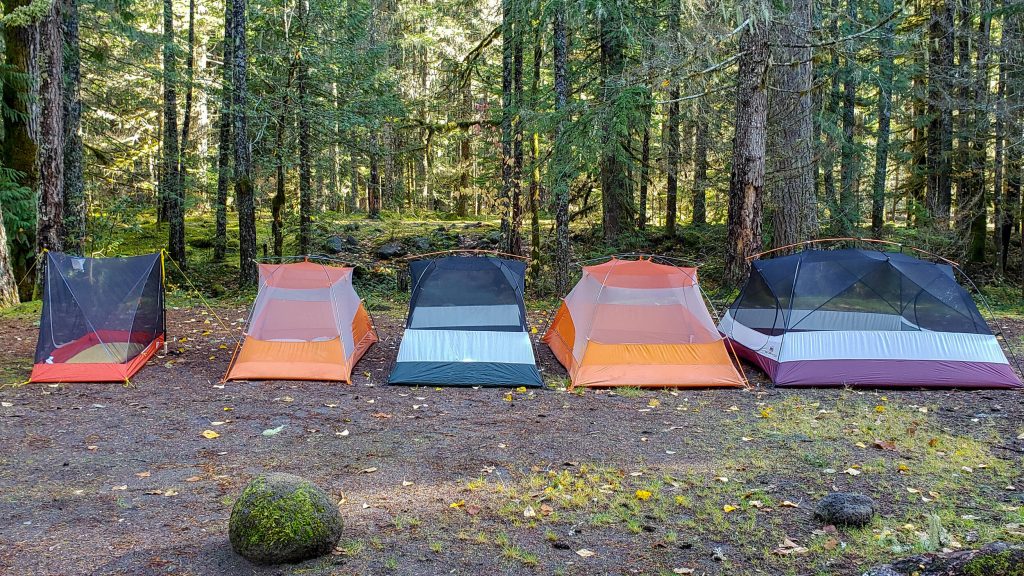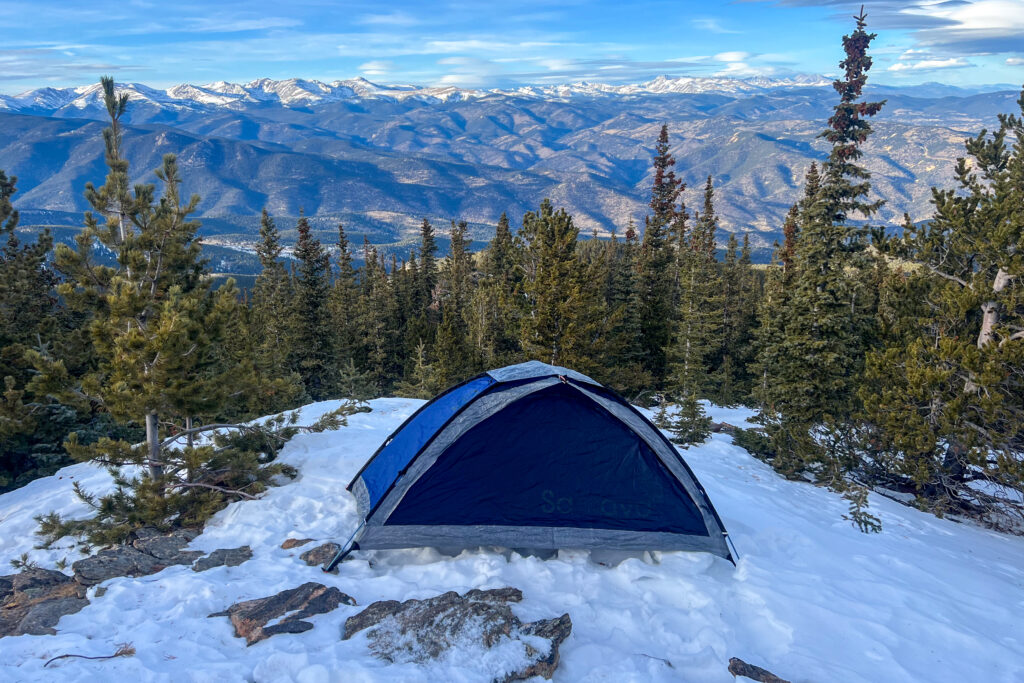
Bottom Line
The Osprey Atmos is legendary, delivering one of the most comfortable and feature-rich pack experiences you’ll find backpacking. We still think it’s a great pack, but it’s overkill for some backpackers, especially compared with lighter options that still perform well.
If someone has a chronically sweaty back, the incredible ventilation of the suspended mesh back panel and hip belt has no equal. We loved how the pack fit us and found the comfort excellent. All of that hardware does mean it’s a bit tricker to get on and off compared to more forgiving packs. Another unique feature is the ability to change the torso length while you’re wearing it to really dial in a fit. Add on tons of zippers, pockets, and a good frame, and you’re left with a pack that really delivers.
However, all of that backpack goodness does start to feel a bit much at a certain point – especially when we found we were happier with simpler backpacks that were lighter and cheaper. We still think this is a great pack, and for the right person, it’s going to be a dream come true. But we also recommend considering some other options before picking one of the heaviest and most expensive models in our full backpacks guide.
How We Tested
We took the Atmos on local trails in Minnesota during preliminary testing when we refreshed our entire backpack lineup.
Quick Specs
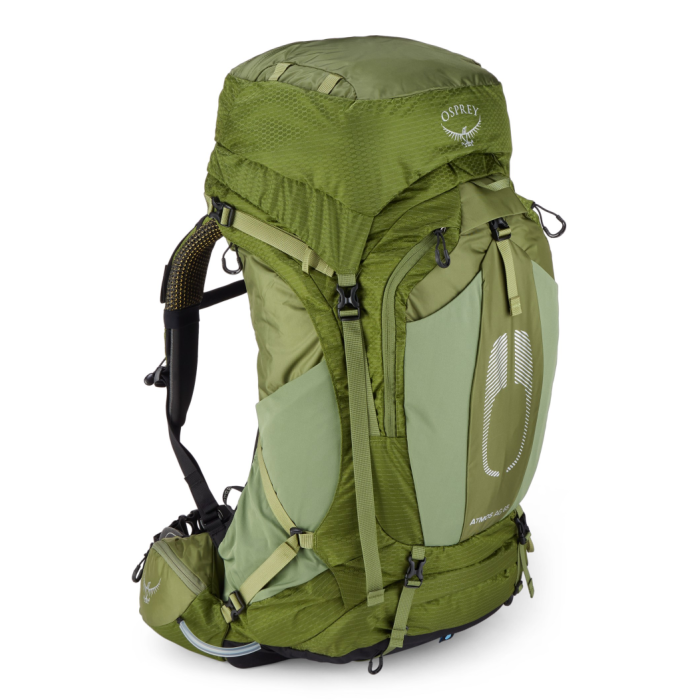
Osprey Atmos 65 / Aura AG 65
Backpacking Backpack with the Best Features
CleverHiker Rating: 4.4/5.0
Price: $340
Weight: 4 lb. 10 oz.
Volume: 65 L
Max Weight Rec.: 40 lb.
Pros
- Can comfortably hold heavier loads
- Breathable & well-padded frame
- Above-average durability
- Sturdy frame transfers weight to hips well
- Very comfortable suspension
- Plenty of room for extra/bulky gear
- Lots of organization
- Very easy to access water bottles
Cons
- Expensive
- Heavy

Comfort
Few backpacks have as good of a reputation as Osprey’s legendary Atmos. Sporting pretty much every feature under the sun, Osprey is determined to make wearing a backpack as comfortable as possible.
For the most part it delivers. The highlight of the pack is the suspended mesh back panel, which offers excellent airflow and support for heavy loads. This mesh extends into the hip belt as well, being one of the few backpacks to try and alleviate the sweat problems that are common among most backpack designs. All of that ties into a remarkably robust and solid feeling frame that should keep the comfort experience consistent.
Still the Atmos’s maximum rated load is a bit odd considering the pack’s weight. It boasts a 40 pound limit, which is only five pounds more than much lighter packs. For our testing, we loaded it up with 30 pounds to compare its comfort to other packs in this category. As expected, the Atmos handled this weight well. We found that the hipbelt did a great job carrying the weight, with excellent load transfer across the entire back region as well. We did find the experience a bit “stiff” in some ways. The robust hip belt and back panel really lock you into place. This is mostly good but also gave our tester the impression he was tied into a system.
This also translates to a rather cumbersome on-off experience. Since the hip belt is so stiff, you need to get your hips lined up to get into place. This will bother some people and be a non-issue to others. However, it’s worth mentioning here that all this comfort comes at a bit of a cost.
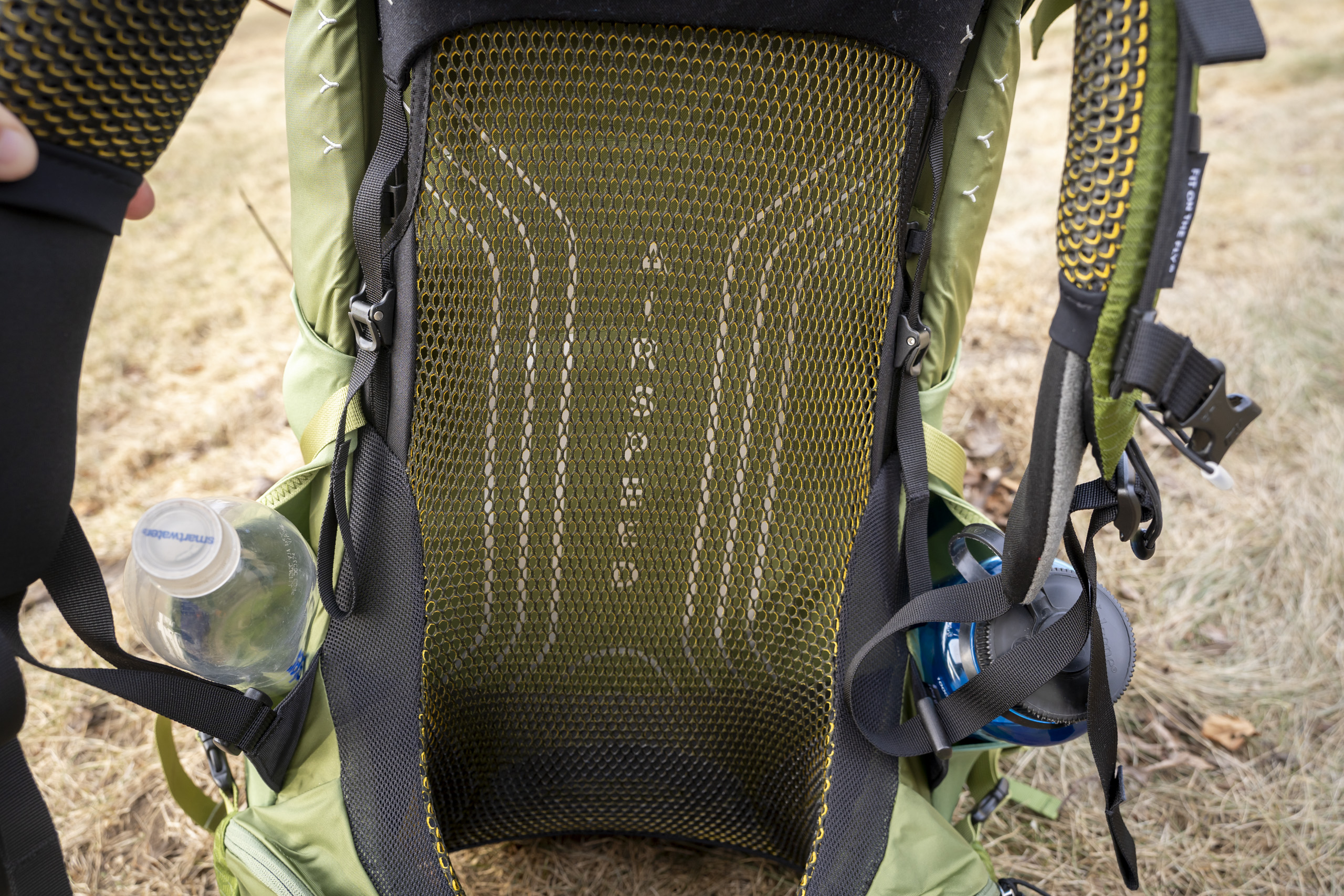
Features
The Atmos sits nearly in a class of its own for how many features it manages to cram into its frame. Some of the most notable ones apply to comfort. In particular, the Atmos allows users to adjust their torso length on the fly as they’re wearing the pack. This is a unique feature that is a little tricky to pull off since the straps are a little short, but when it works it works well.
In addition, both the hip belt and the shoulder straps include extension pieces, so you can add or remove sections of support on each area. In practice these features sound really wonderful, but most users will end up setting them at their preferred limits and then not touching them again. The exception to this is if over the course of a long thru hike your body shape changes – in which case, the adjustable hip and chest strap system would be very nice.
We’re also a big fan of the way that Osprey does water bottle pockets. Featuring a vertical opening with a pull loop, we found we could fit both a smart water bottle and a larger one liter Nalgene into them without issue. The quick trekking pole storage system is also a favorite feature of ours, allowing us to store our trekking poles quickly to have a hands-free moment on trail. That being said, we are able to replicate it on other packs, so it’s not a feature that would make us specifically buy the Atmos.
The list of features go on – and we have to credit Osprey for executing all of them well. Both the side internal access zippers and the side pocket zippers are low profile and work smoothly. The internal access zipper is quite well hidden but allows for nearly the entire side to be opened up. We liked the dual ice axe attachment system because it has a good shock cord toggle mechanism to keep the handle in place. If you’re looking for a pack that has the kitchen sink, the Atmos is not going to disappoint.
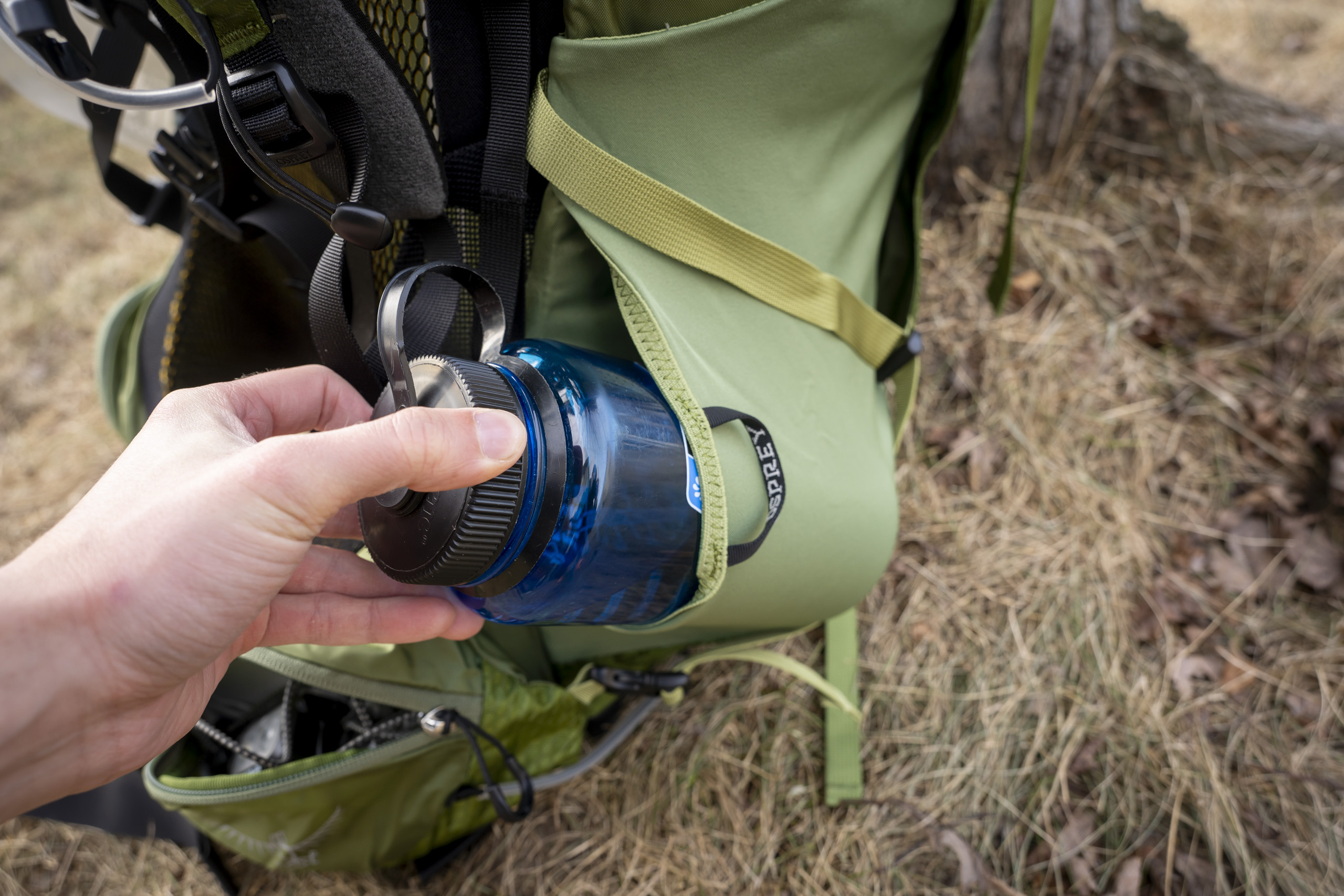
Durability
As one of the heavier backpacks in Ospreys lineup, durability is a priority here. Made of thick 210D and 500D nylon, the Atmos impressed us with its overall build quality. It shouldn’t come as that big of a surprise – Osprey makes some of the best backpacks around. Even so, we found it to be fantastic. This is a pack that we’d confidently take on a trail with bushwacking and rock scrambling without worry or lend to a friend knowing they won’t damage it.
The limited use of mesh helps here. Earlier versions of this pack used mesh more liberally on the back stretch pocket, so we were pleased to see that Osprey replaced some of that with solid face fabric. The only other place we see mesh being used are on the side bottle pockets. Though we might prefer to see solid fabric here for improved durability, it’s at least thicker and more robust mesh than what most manufacturers use.
In the background to this entire durability discussion is the fact that Osprey has an excellent warranty. Any damage to the pack is covered. It’s great to see a company take care of its users and stand by their products, fixing gear and getting it back out into the world instead of forcing people to buy new stuff.
Osprey’s attention to sustainability is also worth noting. The main body fabric of the Atmos uses recycled, Bluesign-approved material, and the DWR treatment is PFC/PFAS free.
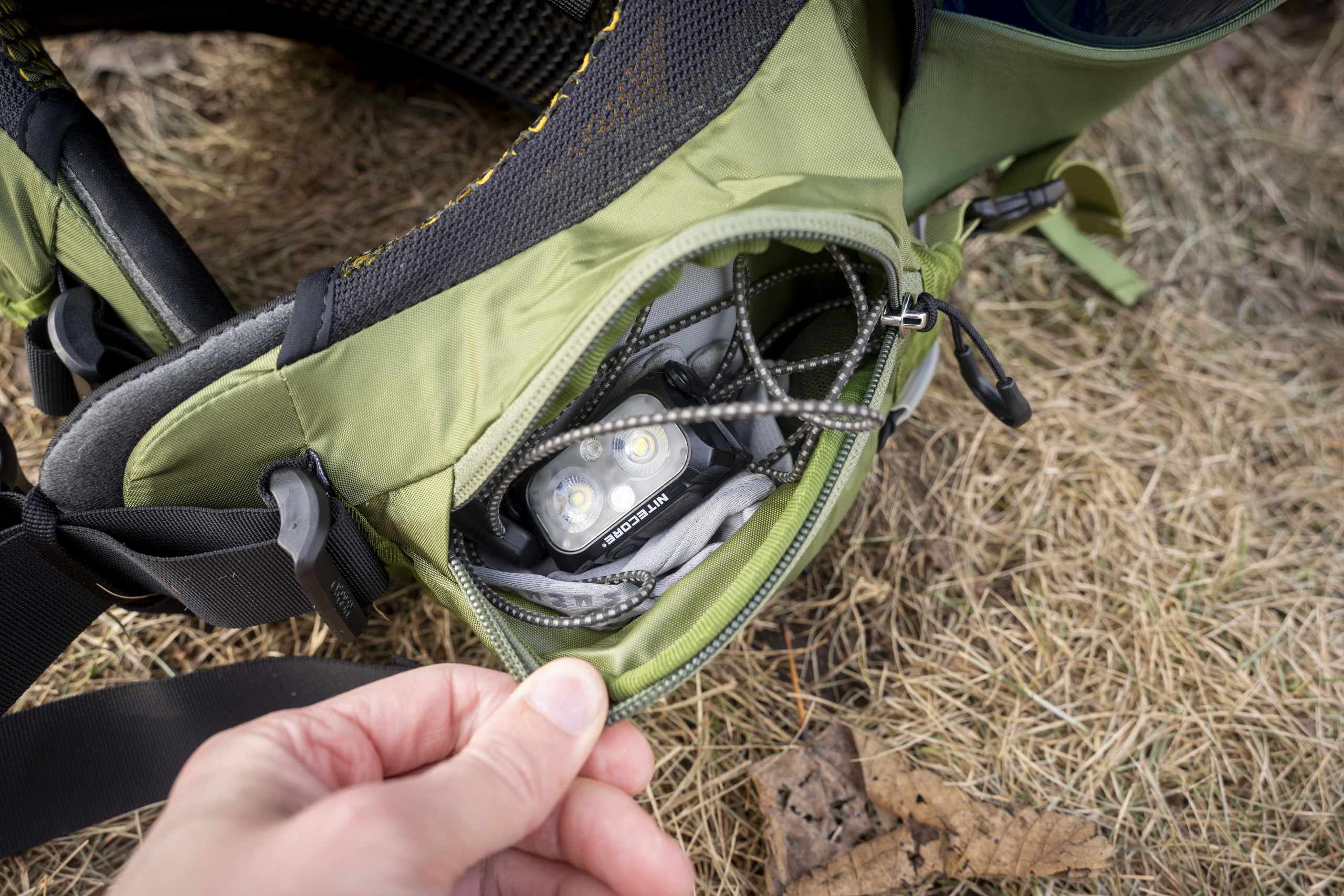
Ease of Use
This isn’t the easiest pack to use, simply because of the daunting amount of features it offers. That being said, each component of it does work well. It’s really just the multitude of options here that becomes slightly overwhelming compared to more straightforward backpacks.
For many packs, the biggest stumbling block is water bottle access. Thankfully, Osprey has long used vertical water bottle access points, so we’re happy to see them in the Atmos. We were able to get our water bottles out without much trouble. Although, we will note that taller 1 liter smart water bottles are potentially long enough to interfere with your elbow position.
The rest of the backpack works well. All the zippers are smooth and easy to use, the clips are high quality and durable, and even the multitude of comfort adjustments were straightforward once we understood what they all did.
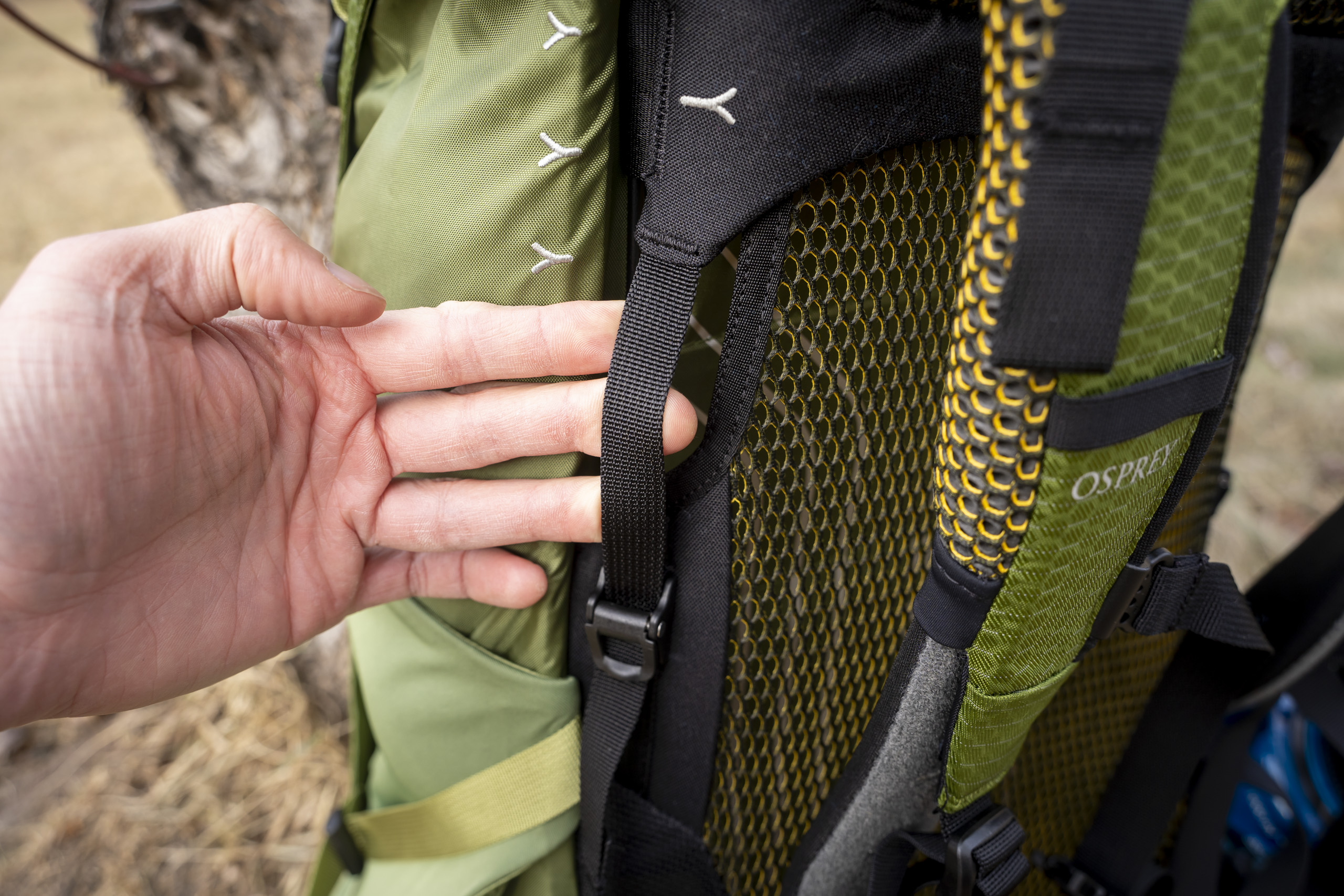
Should You Buy the Osprey Atmos AG Backpack?
If you’re someone who wants every feature under the sun, then you’ve probably heard of the legendary Atmos. We can confirm that it is an excellent pack with excellent comfort, features, and durability. That being said, many backpackers simply don’t need the level of features that this pack provides. In addition, this pack is heavy but doesn’t carry much more weight than much lighter backpacks. This doesn’t make it a bad product, but potential buyers should know what they’re getting and what they’re paying extra for. Our gear analyst prefers lighter packs. However, backpackers who value comfort and durability over weight savings should definitely consider the Osprey Atmos AG 65.
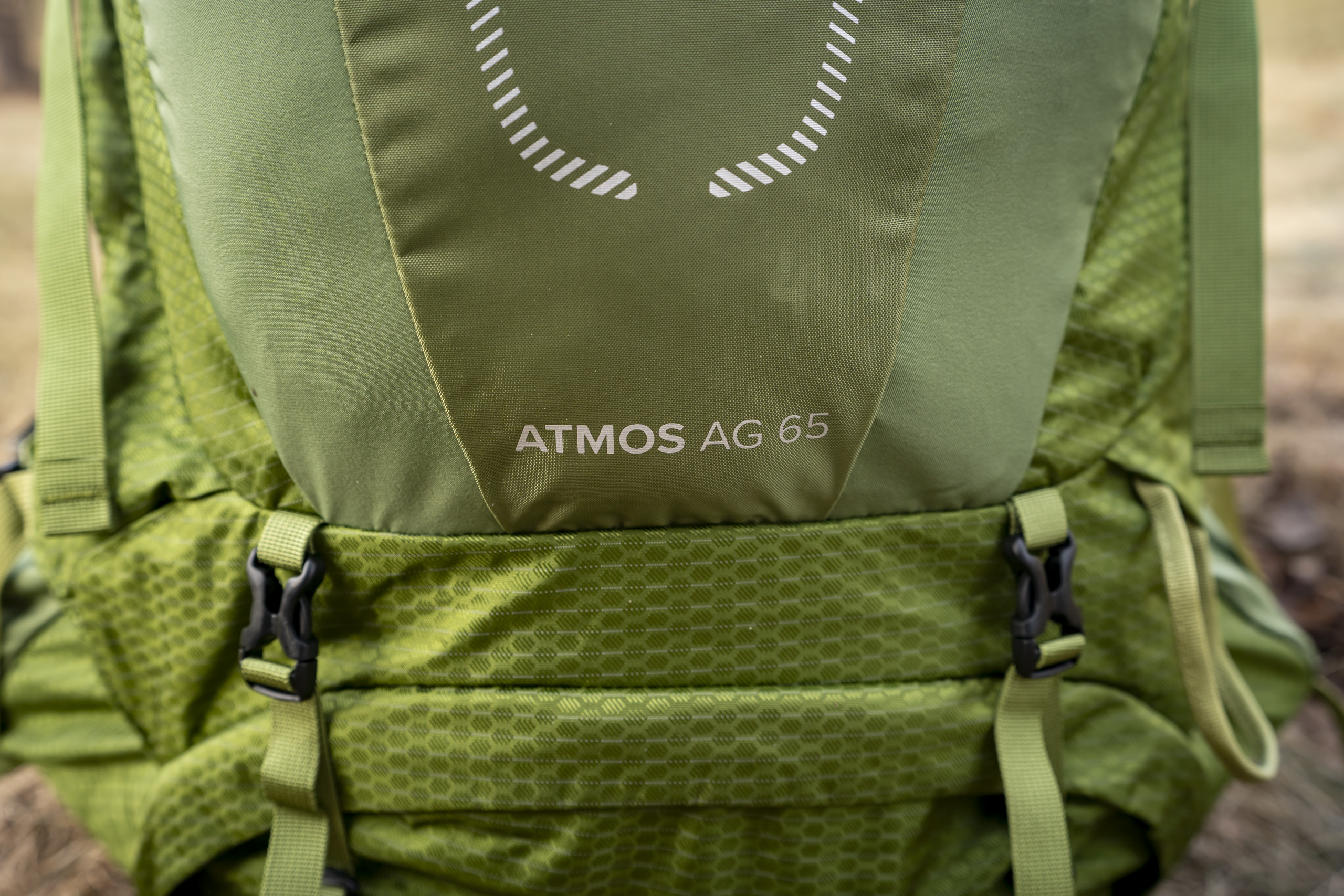
What Other Backpacking Packs Should You Consider?
To see backpacks that can haul more gear or trim down the weight, check out our full Backpacking Backpack Gear Guide.
Gregory Paragon 58 Review – For many people, we think that the Paragon offers a better balance of features, price, and weight than the Atmos. Both of these packs are great, but for the price and weight, we think that the Paragon is a smarter choice.
Osprey Exos 58 Review – If you liked the overall feel of the Atmos but thought that it was a little overbuilt, the Exos might be exactly what you’re looking for. It’s a more stripped down and lightweight Osprey backpack.
REI Flash 55 Review – If the price tag of the Atmos is a shock, the Flash is a backpack that can evolve from your very first weekend trip all the way to a multi-month thru hike.
